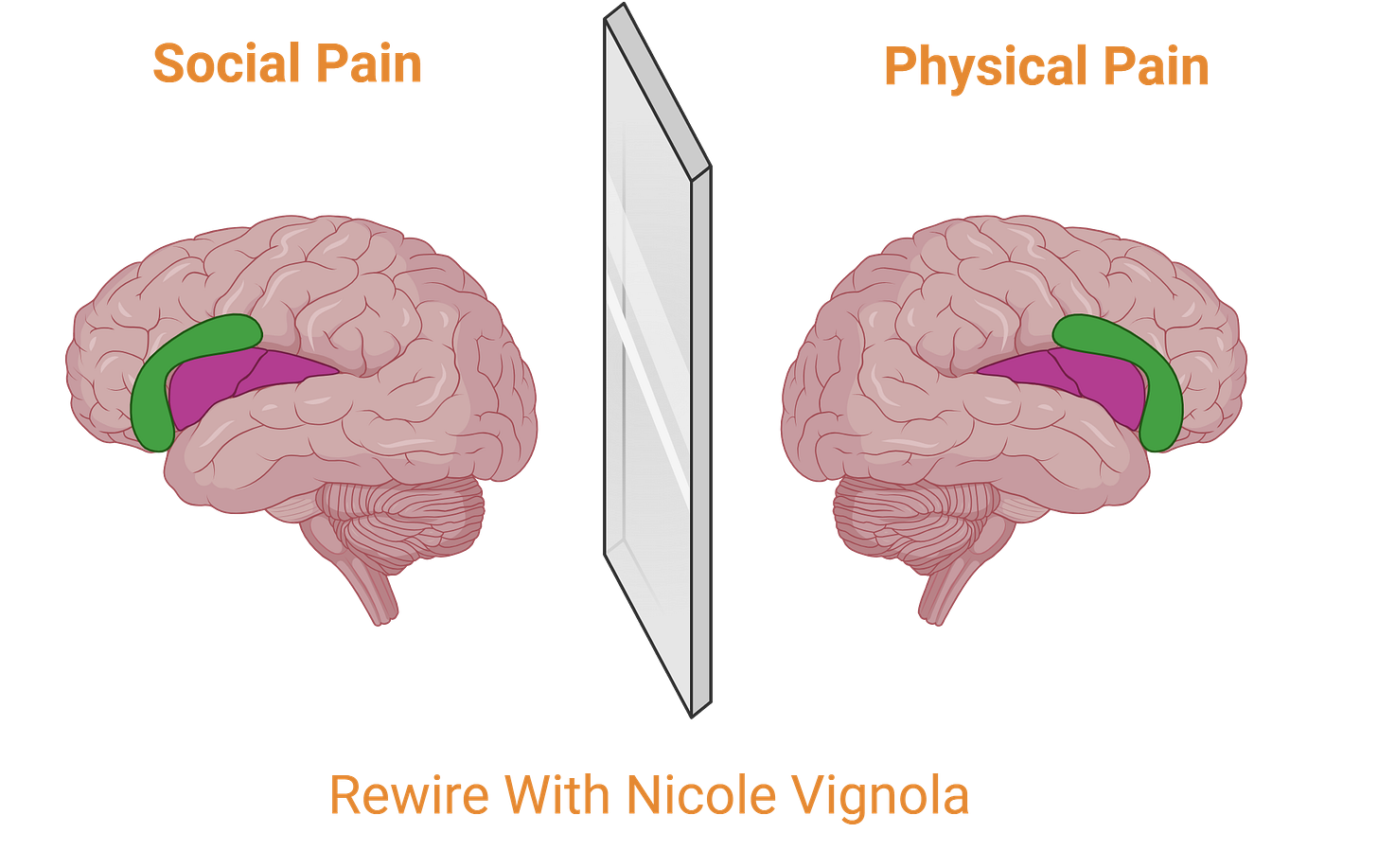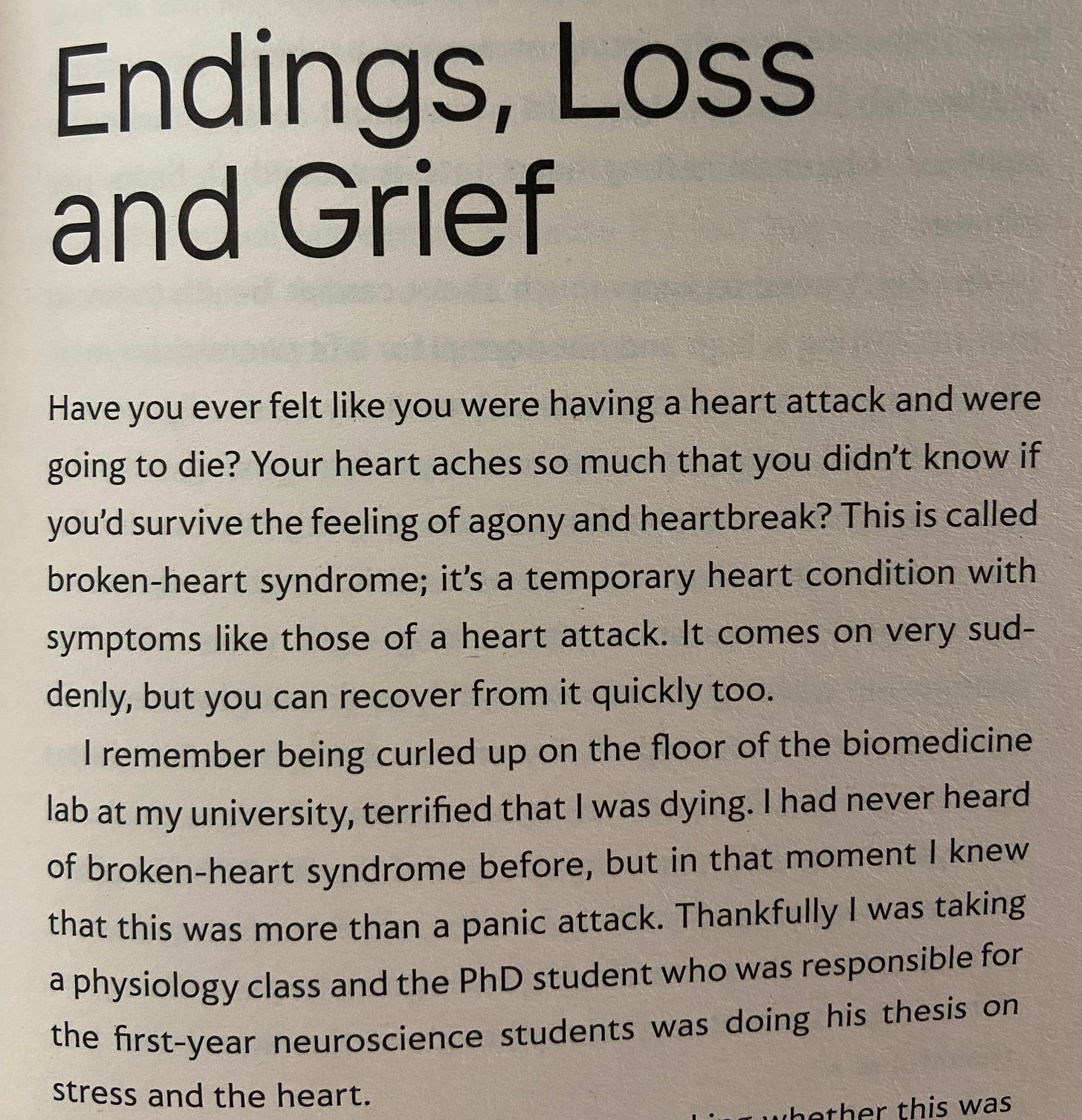Hey Rewire Collective!
Welcome to this weeks newsletter! Let’s chat about social rejection, what it does to our brain, and how to cope.
What Happens in The Brain?
For the brain, a broken arm and a broken heart are not so different. The same brain regions that activate during physical pain – anterior insula, dorsal anterior cingulate cortex – activate following social rejection and a breakup (1,2). The theory that the brain evolved to respond to social injury using some of the same neural systems as physical pain is known as Social Pain Overlap Theory (3). And it sort of makes sense – if being social is vital to your survival, then you might as well use a pre-existing pain system to deter from social exclusion (4).

If you’ve ever felt like your heart was ACTUALLY breaking when a relationship ended, then join the club. I give you a sneak peek into how brutal that feeling was for me in my book. And I explain more about the underlying cause, and how to deal with it!
Interesting side note, but this social pain can actually be improved with conventional painkillers!
This is not the recommended way to deal with social pain, but DeWall, Eisenberg, and colleagues compared giving a placebo to giving acetaminophen to heartbroken individuals, and individuals given acetaminophen reported less hurt and had less activity in pain-associated brain regions after three weeks.
Again, not recommended, but further evidence that the systems overlap (4; Psychological Science, 2010)!
But the physical pain isn’t the only side effect of a rejection. People who are excluded also have poor sleep and worse immune systems (4). Rejection can also cause our brain to rewire, allowing us to internalise this rejection and change our concept of ourselves for the worse (5).
The key word there is it ‘can’ cause this to happen – it doesn’t always! So, what’s different between different individuals that allows our responses to rejection to be so different?
Three brain regions have been identified as responsible for this difference: the anterior insula, the medial prefrontal cortex, and the dorsolateral prefrontal cortex (6). In particular, I want to focus on the prefrontal cortex, which is a regulatory area of the brain that gets activated by social rejection. Its role is to regulate our response to distress, and in doing so, it can stop certain pain-related brain regions from becoming active. However, it can also respond to stress with anger and violence (7). We see that this regulation of response to social rejection is particularly important in late childhood. If improperly regulated, the response of anger and aggression to rejection can lead to further rejection, causing a negative feedback loop (6,7).
If you feel like this is absolutely you, I have YouTube videos to help you Rewire You Response to Rejection!
How to cope with it?
Acute rejection is easier to address. The best ways to cope with social rejection are:
Seek positive connections with friends and family to boost your dopamine and serotonin!
Ahem… Looking for positive connections? A community mindset? A group of like-minded people looking to Rewire together?
Look no further!
We’re rewiring our heartbreak together this spring!
If you’ve recently been through a breakup, an end to a situationship, or a divorce, I am holding your hand and taking you on a road trip through neuroscience-backed ways to heal and grow your confidence!
Boost your natural opioid production with exercise! Instant pain relief.
Detach from the rejection. Although sometimes rejection can be a clue to bad behaviour that needs changing, rejection often doesn’t concern us and our capabilities. Try to stop taking the rejection so personally. Easier said than done, but practise makes perfect! Let’s rewire our narrative together.
Until Next Week,
Nicole x
P.S. Leave a comment with your requests for future newsletter topics!
References
https://www.science.org/content/article/rejection-pain-brain
Why does social exclusion hurt? The relationship between social and physical pain - PubMed
The neural bases of social pain: Evidence for shared representations with physical pain - PMC
When Some Adolescent Girls Internalize Rejection, It Really Is in Their Head | UC Davis





